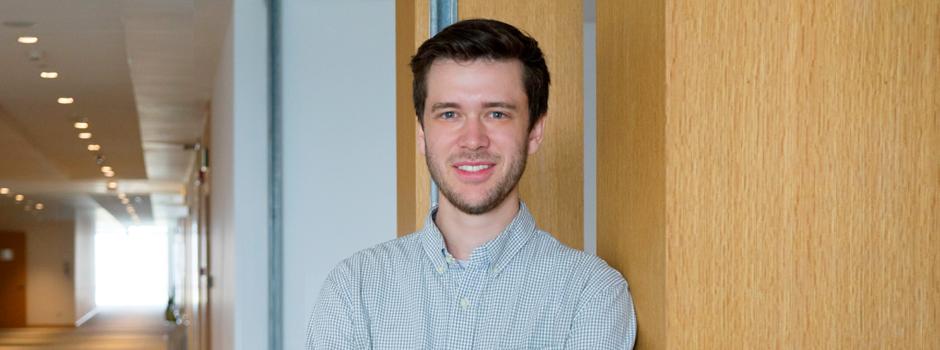Over his college years, Sean Kelly ‘17 has been mastering the art and application of technology into projects that range from assisting sufferers of dementia to VR music lessons for those without access to expensive instruments. Now the Californian will be graduating from NYU Shanghai to further develop augmented reality technology in medical visualization for his very own company in New York.
Why did you choose to study at NYU Shanghai?
I learned about it from NYU and it was the only school I applied to internationally. I’ve always wanted to push boundaries and do something different. Because of email problems, I actually never got my acceptance letter, just a giant NYU Shanghai packet in the mail. I ended up going to Candidate Weekend in New York and distinctly remember a sample class taught by Clay Shirky about networks, which amazed me. I walked out thinking “I have to go to this school.”
How did you pick your major?
I came with an interest in Interactive Media Arts (IMA) but I didn’t know it at first. For my first semester, I was a Business Finance major. During my second semester, I switched to Computer Science. I was also enrolled in an IMA course and felt pulled in that direction. There was a point during sophomore year when I spoke with Marianne Petit - then Director of IMA - for a moment of much needed clarity. ‘You found what you want to do!’ she told me.’
I’ve not regretted it for even a moment, especially after studying away in New York, taking classes and working as a researcher in the Interactive Telecommunications Program (ITP). I see how unique ITP is as a grad program—it’s one of only a handful of programs of its type—but IMA is really the only undergraduate program of its type in the world.
I think what IMA does really well and what makes it unique as an undergraduate program is that it not only equips you with the tools and skills to create, but teaches you to think about the deeper purpose of application. It asks ‘So what?’ The fact that it’s focused more conceptually is a very bold choice—to give that freedom and challenge to undergrads. I think it’s working.
How so?
The biggest challenge has been making projects that were not just ‘cool’ but purposeful—whether it was creating something like Buddi, a wearable device that keeps a safe look out for wandering sufferers of dementia, or Teach-U VR, an app I collaborated on with Sam Shi ’17 that uses Virtual Reality to give piano and drum lessons. Identifying the purpose of these projects and having a point to work with—even if it’s not some grand, great social good that I’m doing—is something that I’ve really learned and practiced.
While studying away in New York, you had an idea for ‘purposeful’ technology that led you to set up your own company. Tell us about MediVis.
I was surprised to find that for visualization in the medical industry, volumetric scans were still being viewed in 2D slices, with clinicians scrolling through images with a mouse wheel. MediVis takes all of these slices and sticks them together in a 3D model that can be navigated with special glasses—you can identify a patient’s face as well as look at a plane of a patient’s head and see through it.
Our technology hopes to advance medical visualization using big data, reconstruction algorithms, cloud visualization and holographic imaging. Surgeons can explore medical imaging data in a 3D real world space, with infrared spatial mapping, customized voice commands and advanced gesture controls. This is going to empower everyone, from nursing students to renowned surgeons and patients.
How have you changed over the past four years?
What I’ve learned through my experience is to always start out with what I’m passionate about. I’ll be immensely more successful working towards my passion instead of doing something in a more lucrative field that doesn’t interest me.


